This step by step diy woodworking project is about a 16×30 gable pavilion plans. This is a large pavilion built on a sturdy 6×6 and 6×10 framing, so you can enjoy your garden and still have a roof that protects you from the sun or from the rain. The roof for this pavilion has a pitch of 8:12 and features large opening on all sides. Make sure you take a look over the local building codes, so you comply with the regulations. Take a look over the rest of our woodworking plans, if you want to get more building inspiration. Premium Plans for this project available Here. Check out the Shop, as well, for full list of Premium Plans.
When buying the lumber, you should select the planks with great care, making sure they are straight and without any visible flaws (cracks, knots, twists, decay). Investing in cedar or other weather resistant lumber is a good idea, as it will pay off on the long run. Use a spirit level to plumb and align the components, before inserting the galvanized screws, otherwise the project won’t have a symmetrical look. If you have all the materials and tools required for the project, you could get the job done in about a day.
Projects made from these plans
16×30 Gable Pavilion – DIY Plans
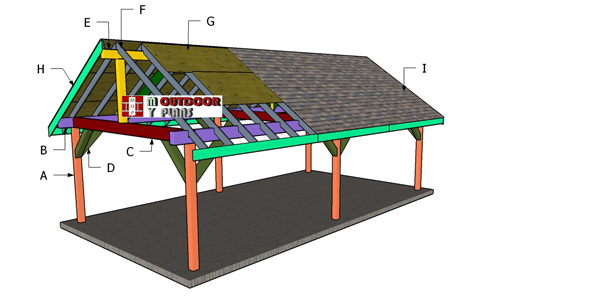
Building-a-16×30-gable-pavilion
Materials
- A – 6 pieces of 6×6 lumber – 8 ft long POSTS
- B – 4 pieces of 6×10 lumber – 16 ft long SIDE PLATE
- C – 3 pieces of 6×10 lumber – 16 ft long CROSS PLATES
- D – 12 pieces of 6×6 lumber – 42″ long BRACES
- E – 3 piece of 6×6 lumber – 53 1/4″ long TOP RIDGE SUPPORTS
- E – 2 pieces 6×8 lumber – 16 ft long RIDGE BEAMS
- D – 4 pieces of 6×6 lumber – 72″ long BRACES
Tools
![]() Hammer, Tape measure, Framing square, Level
Hammer, Tape measure, Framing square, Level
![]() Miter saw, Drill machinery, Screwdriver, Sander
Miter saw, Drill machinery, Screwdriver, Sander
![]() Safety Gloves, Safety Glasses, Post hole digger
Safety Gloves, Safety Glasses, Post hole digger
Time
Related
- PART 1: 16×30 Pavilion Plans
- PART 2: 16×30 Pavilion Roof Plans
How to build a 16×30 pavilion
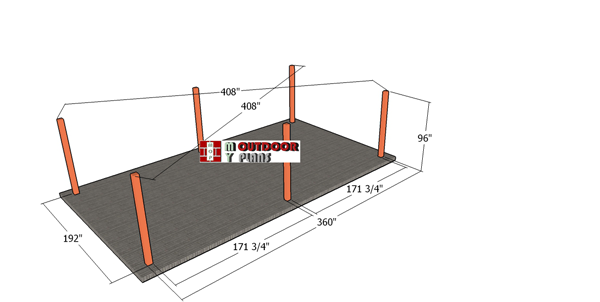
Laying-out-the-posts—16×30
First, layout the posts for the large pavilion. Use batter boards and string to determine the location of the posts. Apply the 3-4-5 rule to every corner of the pavilion, so you make sure they are right angled. Make sure the diagonals are equal. Determining the location for the pavilion is essential, as you have to comply with the local building codes. Make sure the surface is level and remove the vegetation layer.
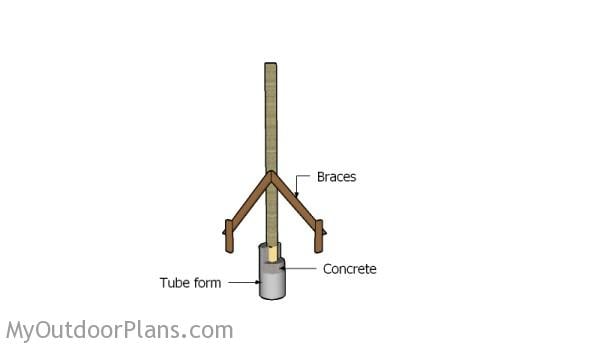
Setting the posts in concrete
Dig 3 ft holes into the ground, making sure they have about 14″ in diameter. Fit the tubes then fill them with concrete and set the anchors. Align the anchors one to another and let the concrete dry out for several days. Next, attach the 6×6 posts to the anchors and plumb them with a spirit level. Use temporarily braces to lock the posts into place till you assemble the whole frame of the pavilion.
Read the local codes for more details on how to secure the posts. Use lag screws to secure the posts to the anchors. Before pouring the concrete you need to make sure the top of the posts are horizontal one to another. Use a laser to mark the level to the top of the posts and use a circular saw, if you need to make cuts.
Building the frame of the pavilion
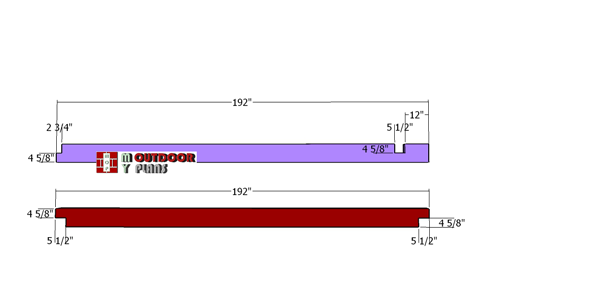
16×30-top-beams
Next, we will be building the top plates for the large gable pavilion. Therefore, this pavilion requires at least 6x10s, due to the large spans on the front and back. As you can see in the diagram, you need to make 4 5/8″ notches to the beams, so you can lock them together tightly. Use a circular saw to make parallel cuts inside the marked areas and remove the excess with a chisel. Smooth the recesses with sandpaper.
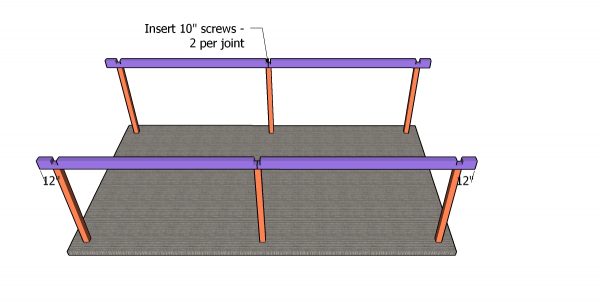
Fitting the plates
Fit the top rails to the sides of the pavilion. Notice the 12″ overhangs to the front and back of the pavilion. Drill pilot holes through the plates and insert 10″ screws to lock them to the posts. Use 2 screws for each joint. Make sure the corners are square and plumb the posts vertically.
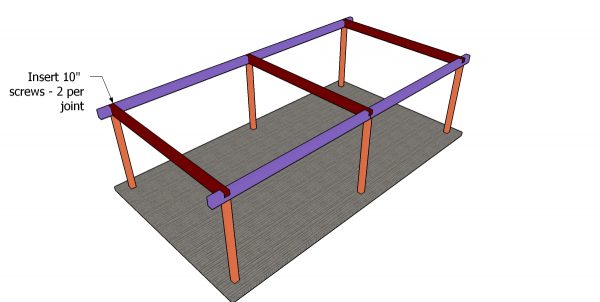
Fitting the cross beams
Next, fit the cross plates to the pavilion. Align the edges flush and drill pilot holes. Insert the 10″ screws to lock the cross plates into place tightly.
Fitting the braces
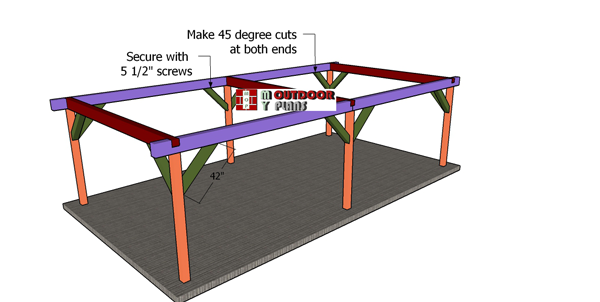
Fitting-the-braces—large-pavilion
Build the braces for the front and back of the pavilion from 6×6 lumber. Use a miter saw to make 45 degree cuts to both ends of the braces. Fit the braces to the posts, after you plumb them vertically. Drill pilot holes and insert 5 1/2″ screws to secure the braces into place tightly. Insert at least 2 screws for each joint.
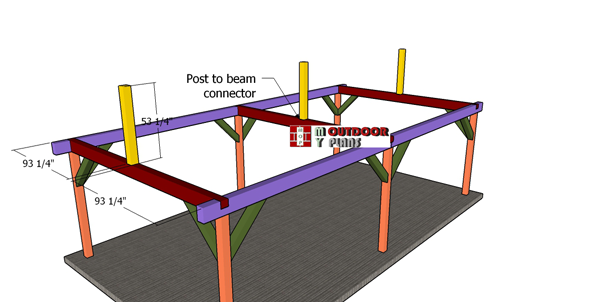
Fitting-the-ridge-beam-supports
Center the 6×6 supports to the top of pavilion. Plumb the supports with a spirit level. Use post to beam connectors to secure the supports to the frame of the pavilion. Insert 2 1/2″ structural screws to lock the supports.
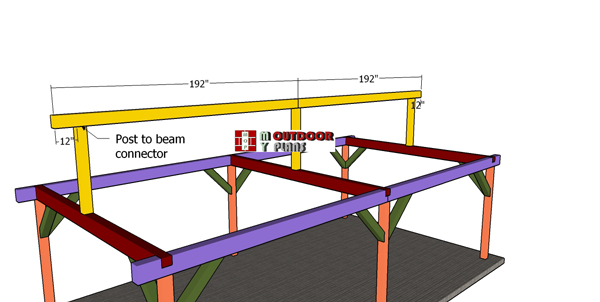
Fitting-the-ridge-beam
Fit the 6×8 beams to the top of the supports (depending on your local codes, you might be required to use 6×10 lumber for the ridge beams, as well – in that case, make the supports 2″ shorter). Notice the 12″ overhangs to the front and back of the pavilion. Use post to beam connectors with 2 1/2″ structural screws to lock everything together tightly. Insert structural screws through the connector. Make sure the corners are square and align the edges flush.
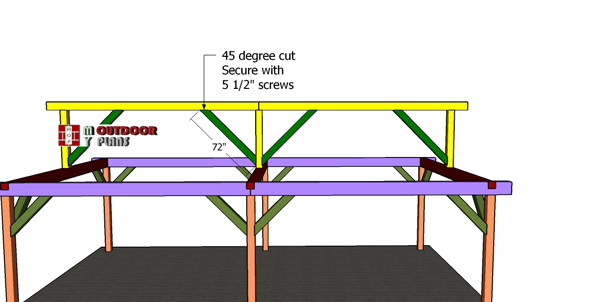
Ridge-beam-braces
Use 6×6 lumber for the braces. Make 45 degree cuts at both ends of the braces. Secure the braces into place with 5 1/2″ screws. Drill pilot holes before inserting the screws. Use at least 2 screws for each joint. These braces will really reinforce the structure and add extra-support to the ridge beams.
Finishing touches
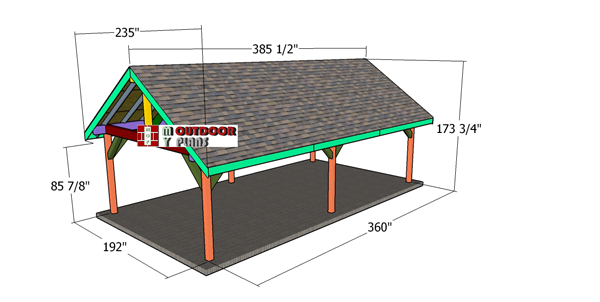
16×30-Gable-Pavilion-Plans—overall-dimensions
Check out PART 2 of the project to learn how to build the gable roof. You can see in this image the overall dimensions for the large gable pavilion. This is really useful because it can shelter a picnic table or even an outdoor entertainment area. Moreover, this makes for a nice double carport.
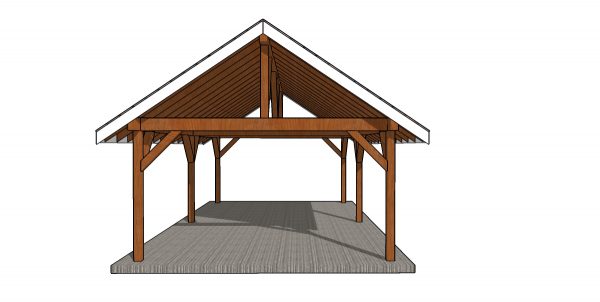
16×30 Gable Pavilion Plans – front view
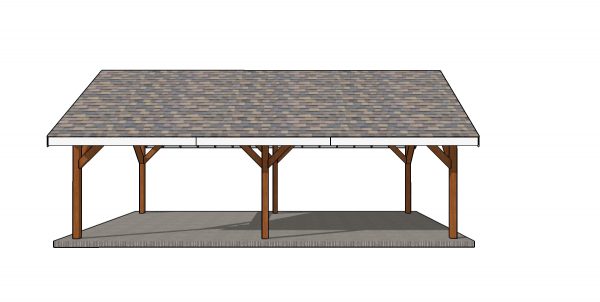
16×30 Gable Pavilion Plans – side view
Fill the holes with wood putty and let them dry out for a few hours. Smooth the surface with 100-220 grit sandpaper and remove the residues with a damp cloth.
Top Tip: Apply a few coats of paint or stain to the components, to enhance the look of the project. Check out the Shop, as well, for full list of Premium Plans. If you want to get PREMIUM PLANS for this project, in a PDF format, please press GET PDF PLANS button bellow. Thank you for the support.
This woodworking project was about 16×30 gable pavilion plans free. If you want to see more outdoor plans, check out the rest of our step by step projects and follow the instructions to obtain a professional result.



1 comment
I live in British Columbia Canada. If I was to order your plans for the 16×30 pavilion could i still download them without issue. I would need to print them also is that going to be an issue? I work in my community of Mcleod Lake. I’m the Land Based Healing Coordinator for Mcloed Lake Indian Band. We are building trails and putting in a dock. At the dock site we want a large pavilion for family gatherings. I need plans to put together a cost estimate.